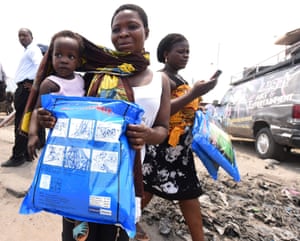Achieving the ambitious target to end maternal and child deaths, enshrined in the sustainable development goals (SDGs), will require ingenuity. The good news is that 11 health innovations could save more than 6 million mothers and children by 2030, if they are invested in and used widely in 24 priority countries.
When I began working in global health (at the World Health Organisation in 1990) 12.7 million children under five and 532,000 new mothers died every year. The challenge looked insurmountable. But in the two decades that followed, unprecedented global cooperation resulted in annual child deaths being cut by more than half, to 5.9 million in 2015, and annual maternal deaths to just over 300,000.
As impressive as the progress has been, it’s not enough. The current rate of decline in maternal and child mortality will not get us to the ambitious SDG targets by 2030. We need innovative tools and approaches to accelerate progress.
The 11 innovations modelled in our analysis, crowdsourced from experts around the world, are gamechanging health technologies and approaches that will have wide-scale impact, ensure healthier babies, protect mothers, and secure better health in the long term.
1 Injectable contraceptives
A new formulation that combines a widely used long-acting contraceptive in an easy-to-use injection is already improving access to this life-changing intervention by allowing community health workers to bring the drug directly to women. Several countries are even studying the potential for women to self-inject, further empowering women and their choices.
Modelling showed that this innovation, making long-acting contraception more accessible, could save more than 3 million lives – including women, newborns, and children – by helping women space their pregnancies in a healthy way.
2 Better pneumonia treatment
Accurately diagnosing pneumonia in young children is very difficult. New tools to diagnose and treat the condition, including better respiratory rate monitors and portable pulse oximeters, can save many more lives from this disease, which is the leading infectious killer of children under five.
3 Kangaroo mother care
There is so much we can do now to give newborns a better chance at a healthy life. Studies have shown that kangaroo mother care, or skin-to-skin contact between the newborn and mother immediately after birth, improves breastfeeding and thermal regulation of newborns, both critical for survival in low-resource settings.
4 Chlorinators for water treatment
Beyond traditional interventions for mothers and newborns, we also need to ensure access to clean water. New technologies, like a chlorinator for community water treatment, are making the use of chlorine for disinfecting water easy and economical.
5 Antiseptic gel
Chlorhexidine, a low-cost antiseptic, is a very simple gel that, if applied to the newborn’s umbilical cord, can prevent deadly infections.

6 Single-dose anti-malarial drugs
Better drugs to protect against diseases like malaria are in the works, including a potent single-dose anti-malarial drug.
7 Neonatal resuscitators
As many as one in 10 newborns need help breathing at birth, new, simple, neonatal resuscitators can help prevent deaths.
8 Low-cost balloon tamponade
Women with postpartum haemorrhage can also be stabilised and treated by a balloon tamponade, a common tool in high-income countries. Recently, this tool has been adapted using readily available materials in low-income countries. Using the materials at hand, a healthcare provider can create a tamponade out of condoms and rubber tubing. Now simple low-cost kits and pre-assembled versions are available, that make this solution more accessible and effective.
9 Drugs to stop blood loss after childbirth
New forms of the drug oxytocin are currently being developed and tested that could increase coverage because they won’t require skilled health workers to administer or refrigeration for storage. These innovations could help ensure this highly effective drug reaches and treats hundreds of thousands of women at risk of death from postpartum haemorrhage (or severe bleeding after delivery) each year.
10 Rice fortification
For children who live in areas where rice is a staple food, we are seeing amazing developments in rice fortification, a process that enriches rice with vitamins and iron supplements. Better nutrition is at the core of better health and smarter ways to supplement staples and introduce foods with more nutritional value are essential.
11 New tests for a life-threatening maternal condition
Preeclampsia is another danger that affects more than one in 20 pregnant women. It is associated with dangerously high blood pressure that can lead to seizures. New diagnostic tools to treat preeclampsia will help identify at-risk women so that they can receive low-cost treatment.
How will these life-saving innovations be funded? Traditional donors cannot do it alone. Governments in low- and middle-income countries have a critical role to play and so do local entrepreneurs with the potential to take forward affordable solutions. The private sector and social impact investors, also want to engage. But all these groups need better data to assess what is available, what is coming soon, or where there is a gap that requires new ideas.
To achieve the goal of ending preventable maternal and child deaths, the world must invest in new and emerging health innovations so that bright ideas turn into real solutions. The lives of millions of women and children depend on it.
Join our community of development professionals and humanitarians. Follow @GuardianGDP on Twitter. Join the conversation with the hashtag #Dev2030.
11 health innovations to drastically cut maternal and child mortality rates
Hiç yorum yok:
Yorum Gönder